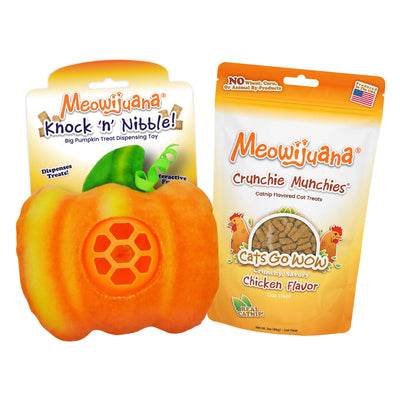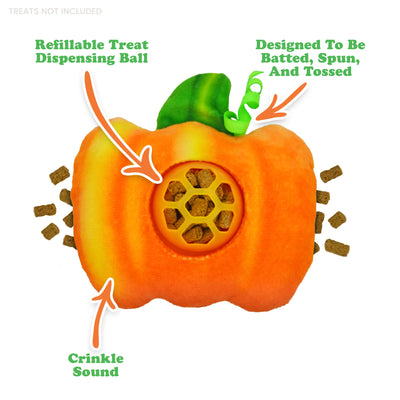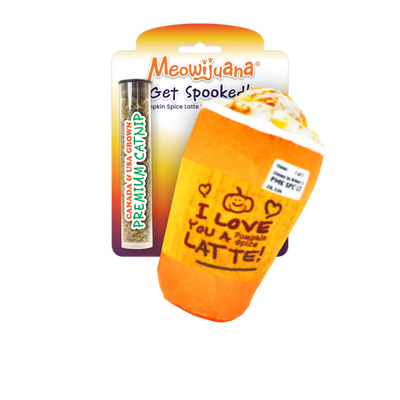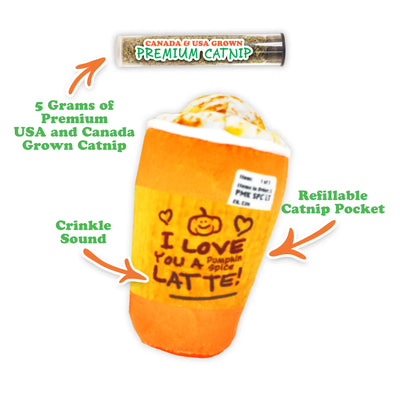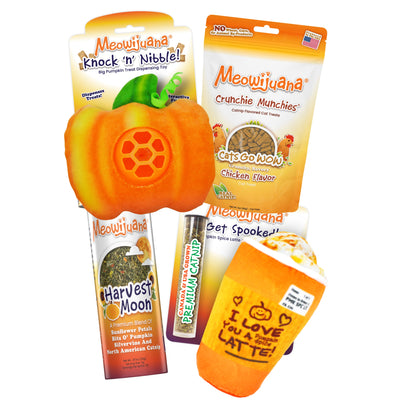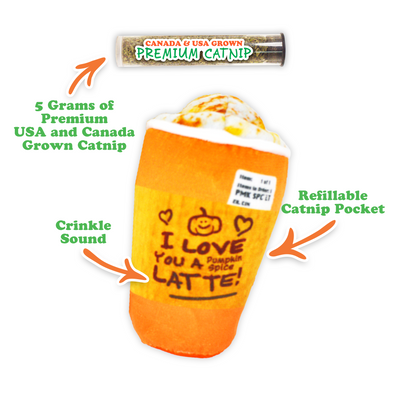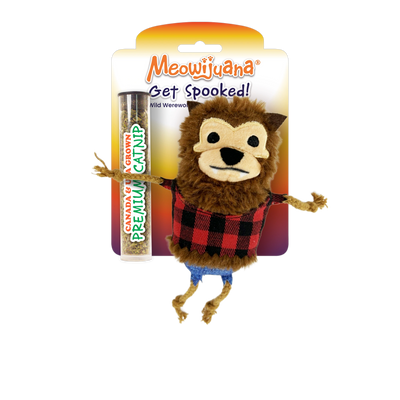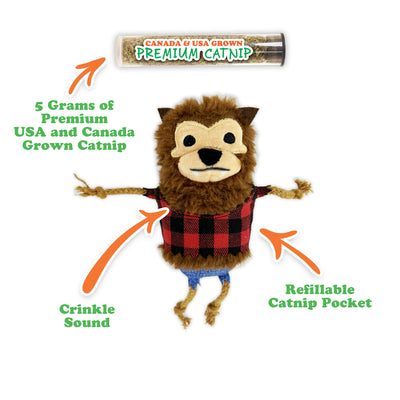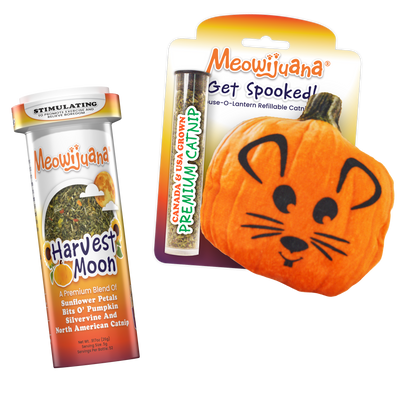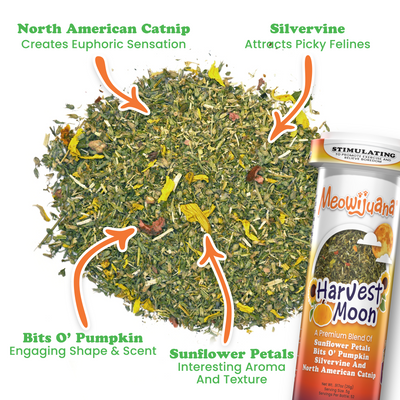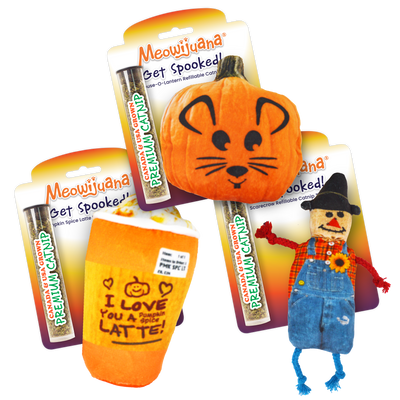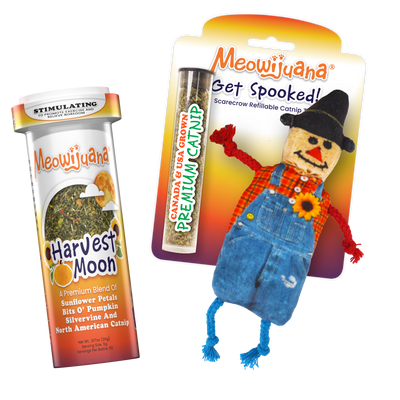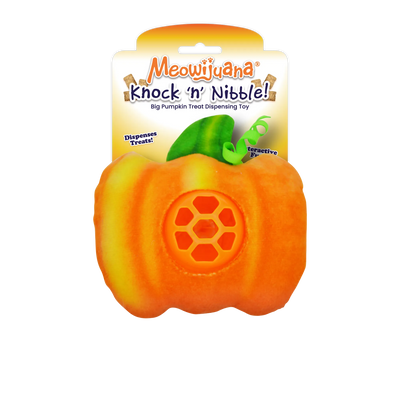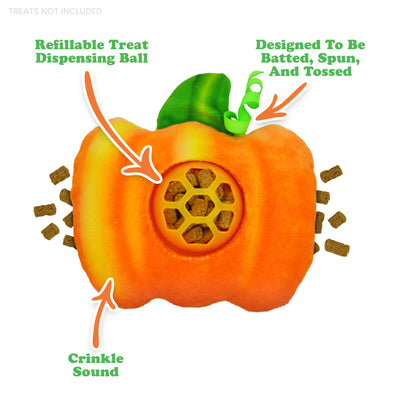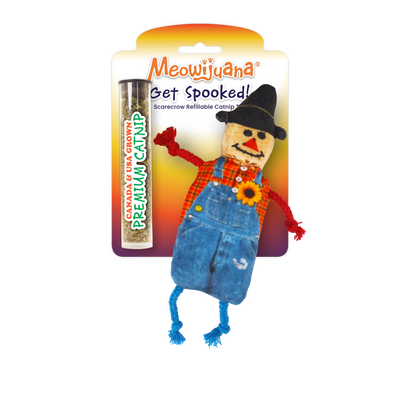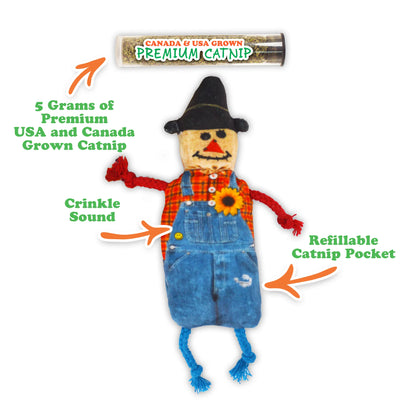Most people have heard of catnip being used in cats. This interesting plant is well known for making cats euphoric; it makes some cats very sleepy and makes some very playful and energetic.

Catnip is a plant in the mint family that contains the essential oil known as Nepetalactone. In cats, it is thought that when smelling the catnip, the nepetalactone targets the receptors in the brain and causes euphoria. It does so by binding to protein receptors in the nasal cavity and stimulating sensory neurons which provoke a response in the part of the brain that regulates the emotions (hypothalamus).
Alternatively, when cats eat the catnip, the receptors cause the opposite effect and cause the cat to become more mellow. Some cats become more hyperactive or rarely even aggressive when encountering catnip. Not all cats respond to cat nip; the response is heritable. Additionally, cats do not respond until they around 6-8 weeks of age and complete response does not occur until maturity (around 6 months of age).
Catnip was used by humans for hundreds of years. It was prepared and used as a juice, tea, tincture, infusion, poultice, and has even been chewed or smoked. It was said to have a soothing effect and was used to treat hysteria, nervousness, and insanity. Different parts of the plant were thought to be mildly stimulating and other parts thought to be calming.
A lesser known fact is that catnip also works on dogs! Dogs have receptors for the catnip plant in both their noses and their stomachs, like cats.

While catnip is commonly given as a fun treat to cats (or dogs), it also has many potential health benefits. In humans, it is said to lessen headaches, soothe cramping, relieve gas and indigestion, reduce insomnia, calm nervousness, and even stimulate appetite. In cats, its most obvious benefits are that it calms nervousness and stimulates appetite. It likely has more benefits, like what we see in people, however, these are not as easily identified in our feline or canine friends (due to a language barrier). Since dogs also have these receptors, they respond similarly and likely benefit from the catnip as well.

Catnip can be applied to dog toys, dog beds, collars, food, treats, bandanas, etc. It is most effective at calming nerves for new objects, places, traveling, storms, fireworks or going to the vet or groomer. Additionally, it can encourage appetite for dogs suffering from diseases that cause them to be anorexic or nauseous. Better yet, catnip is safe! There are no documented side effects of catnip being used in dogs or cats. The worst thing that can happen is that it will lose its effectiveness if used too much or your pet can become a tad bit too hyper or calm. The good news is that the effects wear off in just a few minutes.
By Dr. Kimberly Couch, DVM




